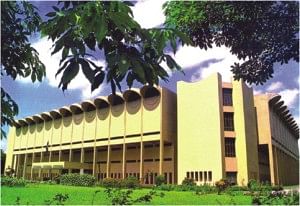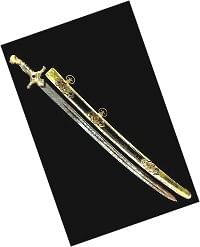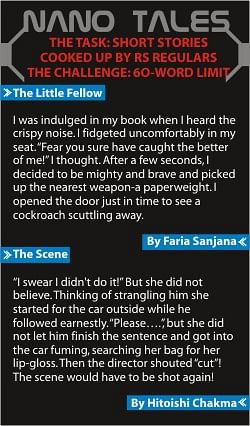
By Adnan M. S. Fakir & Shuprova Tasneem; Photos by Adnan M. S. Fakir
By no doubt our country, or more specifically, the governments of our country, has a bad reputation for maintenance and proper presentations. This reputation is true for many cases, ranging from construction of roads to government buildings, electricity and telephone wires to tourist spots (one of our most potential income generating sectors being made almost useless). Our National Museum seems to be no exception.
 The problem is, very few amongst our generation actually bother to know about our country; hence very few actually end up going to the National Museum unless our parents tie us up with some kind of emotional black-mailing and force us into there. The truth is, as poorly maintained as our National Museum maybe, it still contains many amazing sights and past stories to tell.
The problem is, very few amongst our generation actually bother to know about our country; hence very few actually end up going to the National Museum unless our parents tie us up with some kind of emotional black-mailing and force us into there. The truth is, as poorly maintained as our National Museum maybe, it still contains many amazing sights and past stories to tell.
The National Museum is a huge building built in 1913 and situated in Shahbagh. With the entry fee being Tk.5 only, upon entering the first floor you will probably think you have taken a wrong route to a clean kacha bazaar. Along with a gigantic model map of Bangladesh lying on the floor, the first few rooms contains displays of wheat, rice, maize, dal, beans, ada, rosun, holud, morich, a rotting model of a coffee plant and many other such items which only God knows why are in the first section of our National Museum (why on earth are they even in the museum)! Next came the fruit, fish and meat markets, along with a miniature stuffed zoo, with poor model displays barely filling the display rooms and wasting gigantic amounts of space. The best thing I learned from these rooms is that Cobras are also called Naja Naja and that apparently there is a species of birds called “wire roosting birds”!
After the first 7-8 rooms, the interesting features start appearing. This includes varieties of marine mollusks from Cox's Bazaar and a model of 5.8 m by 1.8 m Saw Fish once caught in the great Jamuna River. An actual skeleton of a Humpback Whale caught in Cox's Bazaar in 1985 is also one of the prime attractions. The gallery of nowkas, with a 71 feet long racing boat (almost extinct now) and 46 different models of boats, is simply superb! The constructions of many of these are now considered to be an endangered form of art. Several Tribal artifacts were also displayed although no information was given to specific tribes or their descriptions. The potteries section was also unexpectedly weak with most display potteries being from the 20th century, but with an excellent exhibit of different types of bodnas (which are also soon to become extinct within a few hundred years).

The best section by far in the first floor is the archeological artifacts which contains a large array of 6th to 12th century Hindu and Buddhist sculptures, terracotta plaques, stone inscriptions of Sanskrit and Arabic, and even intricately designed entrance pillars to temples made out of black stone and burned clay. The only drawback again was that, none of them were properly labeled, as to where each item was found, what it depicts and the history behind it. Ivory fans, daggers, back-scratches, chess sets, jewelry box and even a pure ivory throne used by the Nawabs were also on display.
Moving on to the second floor, the first room will make anyone want to turn into a warrior and slash people's guts out. It is a gallery containing various weapons used in ancient wars, such as weirdly shaped maces, daggers, swords, blood stained executioner's sword, 12 feet long spears, shields and armors, bows and 6 feet long arrows, katars, axes, 6-feet long muskets and also the talwar of the famous Tipu Sultan. The next few galleries again become mundane with displays of mainly our regular day to day society, till the extravagantly luxurious and seductive beds of the Nawabs come on sight. There are gigantic cots up to 18 feet high and unreachable without stairs, with legs magnificently carved with mystical angels or sensual dancers.
The gallery of arts is another must see; devoted to the famine masterpieces of Joynal Abedin and other contemporary artists, it is simply breathtaking.
 It is generally agreed that museums should inform and correctly portray to the younger generation the full history of the country; our National Museum fails this criterion. Sadly, not only is there no proper information about the war, very little is mentioned about the Language Movement and nothing is mentioned about the upsurge of 69, the elections of 1970 and several other important moments of our history. The gallery mostly contained pictures and some important objects, like the table where the Pakistanis signed the document of unconditional surrender. There is also a colossal gallery titled “Memorial Corners”, filled with portraits of tyrant Mughals to martyred commanders, with no chronological order at all, and pictures of our war with no proper labeling. It is simply sad to think that over 10 rooms are previously wasted, filled with plastic looking plants and fruits, samples of wood, earthen pots, saris, toys made out of cloth etc. but Bangladesh's history is so vaguely displayed. After the second floor, the government must have run out of money, or patience, because the third floor is a complete waste dedicated to portraits of historical figures all over the world (such as Einstein, Newton etc) and reproductions of European art, which frankly does not fit in the National Museum of Bangladesh.
It is generally agreed that museums should inform and correctly portray to the younger generation the full history of the country; our National Museum fails this criterion. Sadly, not only is there no proper information about the war, very little is mentioned about the Language Movement and nothing is mentioned about the upsurge of 69, the elections of 1970 and several other important moments of our history. The gallery mostly contained pictures and some important objects, like the table where the Pakistanis signed the document of unconditional surrender. There is also a colossal gallery titled “Memorial Corners”, filled with portraits of tyrant Mughals to martyred commanders, with no chronological order at all, and pictures of our war with no proper labeling. It is simply sad to think that over 10 rooms are previously wasted, filled with plastic looking plants and fruits, samples of wood, earthen pots, saris, toys made out of cloth etc. but Bangladesh's history is so vaguely displayed. After the second floor, the government must have run out of money, or patience, because the third floor is a complete waste dedicated to portraits of historical figures all over the world (such as Einstein, Newton etc) and reproductions of European art, which frankly does not fit in the National Museum of Bangladesh.
At the end of it all, our request to the government is this: to properly renovate the National Museum by portraying our history suitably and with adequate information. We learn very few things about our history from the museum compared to what can be revealed through the many exhibits. This Museum also acts as our identity to the outside world and future generations, so renovating it for the sake of preserving our past heritage and culture is a must.

